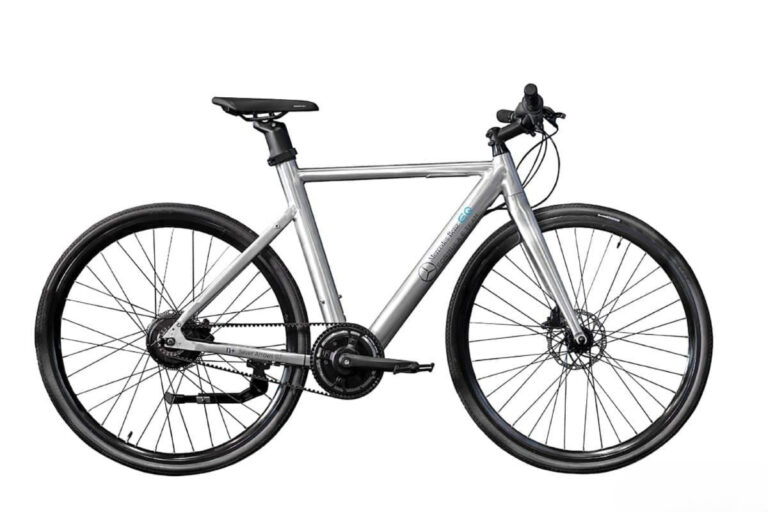Why would a car or motorcycle manufacturer want to manufacture an electric bicycle? There are a number of reasons, starting with e-bikes being the cheapest way to get into the EV market.
Not only do e-bikes cost less to build than a car or motorcycle, but even the prototyping is cheaper. For example, a prototype car can cost millions to build, whereas a prototype e-bike can cost mere thousands. Also, the lessons learned from bicycles scale up nicely, and engineers and designers can understand on a small scale the stress points and what geometry and suspension changes might make for better handling.
E-Bike Considerations For Car Manufacturers
Car manufacturers worldwide are seeing more city streets closed to cars but open to bikes, leading many to recognize a lucrative opportunity.
Who Are The Players?
Some companies are just getting in on the action, while some got into the game, learned some lessons, then abandoned them, and some are still involved. This raises a critical when choosing which brand you buy an e-bike from. You need to know that you’ll be able to get a service when parts wear out, and the motor and battery will last for a long time, so selecting a trustworthy brand is vital.
Automotive companies who’ve dipped their toes into the waters of manufacturing electric bicycles include:
Mercedes-Benz
The German brand is known for luxury performance vehicles. It teamed up with N+ Bikes to license a line of e-bikes that would have all the tech you’d expect from a leader in Formula 1 racing, including features like a display built into the handlebar/stem combo and a Gates carbon belt drive with Enviolo continuously variable transmission (CVT).
One Mercedes model, the Champion Edition, has no gearing but features two motors, one in the rear wheel and one in the front. It’s the most expensive model of the four available at $5,800. The lower-line Formula, E Team e-bike, comes in at $3,450, the Silver Arrows sells for $4,500, and the Silver Arrows Sport is $4,950. All three have a 250W mid-drive motor with 80 N/m of torque.
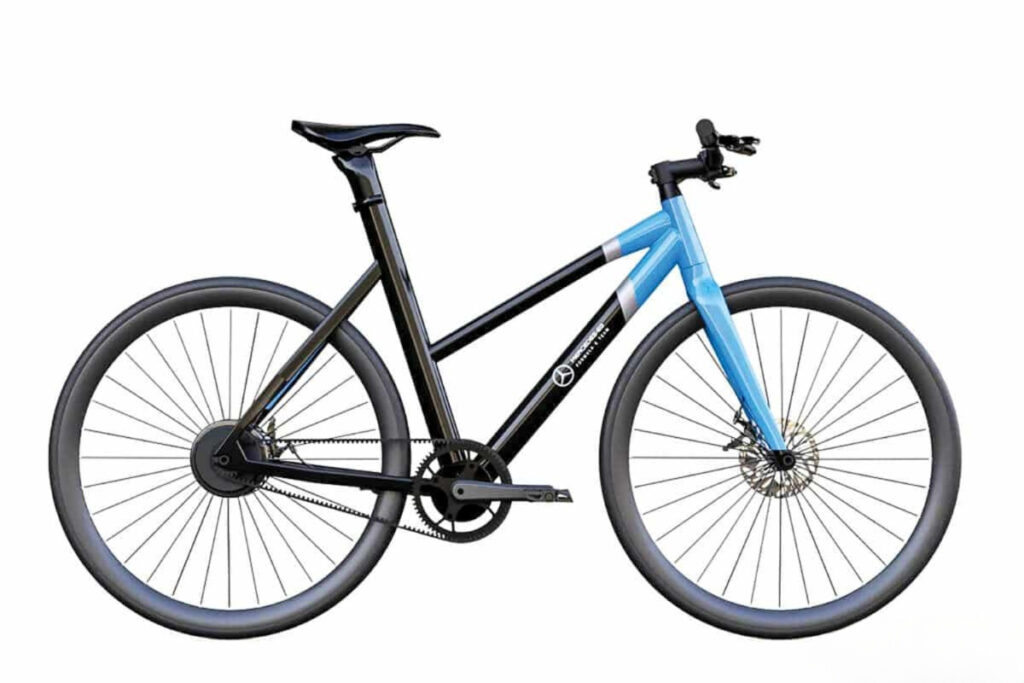
Audi
Audi had a crazy concept e-bike built from carbon fiber-reinforced polymer with a massive battery and too much power. It put out three horsepower, well over the U.S. limit of one horsepower (750W), and a top assist speed of 50 mph. Audi launched the bike at the Worthersee Tour in Austria, and it was named for the event. Thankfully, it was only a prototype, and the public never could ride it.
Audi learned a lot about their e-tron cars as a performance car company, including range-related issues. Back in 2012, that bike had a range of almost 44 miles, which was impressive considering the level of battery technology at the time.
Jeep
QuietKat is well-known for making fat-tire hardtail e-bikes for hunters. Jeep approached QuietKat a few years ago to develop an e-bike that would be appropriate for the car developer’s owners. QuietKat responded with its beefiest and highest-spec bike so far, adding rear suspension to the mix. The $7,499 e-bike has been a hit, including having Bill Murray sitting on one in a Jeep Superbowl commercial.
The success of that bike prompted a new version that rolled out with an even higher spec 1000W mid-drive motor, 1000Wh battery, and a rear-wheel melting 160 N/m of torque. That torque would be handy when on Jeep trails or hauling game out of the woods.
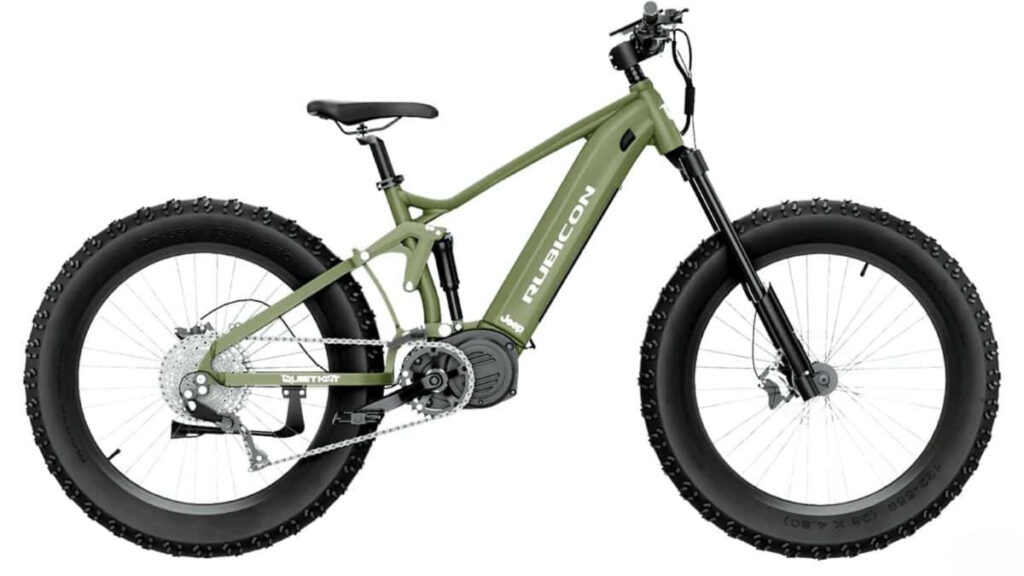
Porsche
Porsche jumped into the fray with two e-bikes, the Sport and the Cross. The Sport is a commuter/touring bike, while the Cross is aimed at off-roaders. The two e-bikes feature carbon fiber frames and Shimano EP8 motors. Porsche also became the majority shareholder in e-mountain bike manufacturer Greyp, which will certainly help with R&D. Its current bikes are both priced at around a Porsche-expected premium of $10,000.
Ford
Ford showed off a funky concept around 2011. That was a design exercise, so when Ford was really serious, they tapped up Pedego to make a cool-looking, 1950s, space-age-inspired bike instead. Thanks to corporate cost-cutting, it was likely killed in a couple of years.
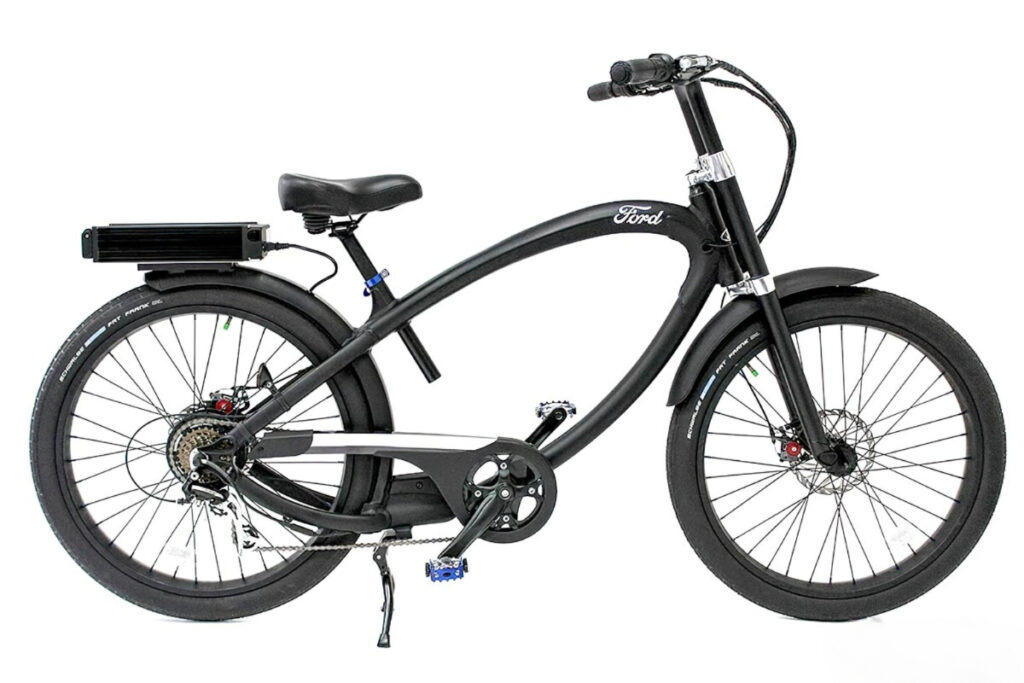
General Motors
GM brought out a great-looking folding e-bike with a futuristic design. It even held a crowdsourcing campaign to name the bike with a cash prize of $10,000. That bike was named the ARIV, and it came in two models, the Meld and the Merge. The difference was that the Meld was a single-speed, and the Merge had an 8-speed Shimano Alfine drivetrain.
Described by GM as a “fast, fun and healthy way to reach a destination,” ARIV e-bikes are developed by GM’s Urban Mobility Solutions division in Michigan, USA and Oshawa, Ontario, Canada. GM was selling them starting in 2019 but stopped production when COVID-19 lockdowns started, which was likely a mistake as we saw how sales of e-bikes exploded during the pandemic. Then again, GM’s first foray into EVs (the EV1) was quite successful, drivers loved them, but they recalled all of them and either crushed them or sent them to museums.
Volkswagen
Volkswagen showed off an odd-looking concept e-bike called the “Bik.e” in early 2010 but never came to market. In 2019, it brought out a cargo e-bike with a self-leveling front end to prevent loads from shifting while turning. It could carry a remarkably large 463 lbs of payload (rider plus cargo) and could use a bucket in the front or be used flat to carry odd-sized or shaped cargo. It had a 250W mid-drive and a 500Wh battery with a claimed range of up to 62 miles. The plan envisioned VW even leasing the bikes to companies and their employees. Sadly, the project fizzled, and the bikes were no longer available.
Ducati
Ducati chose the easy route by starting with bikes from Italy made by Thok. There’s a good connection here because Thok’s Livio Suppo was a former team manager for Ducati and pushed Thok CEO and former pro downhill mountain bike racer Stefano Migliorini into the direction of e-bikes.
Unlike Ducati motorcycles, Thok has made throttle-free, high-spec, enduro e-MTBs for a few years. However, Ducati does make commuter bikes under their own corporate flag. But the Ducati e-bikes aren’t the same models you could get from Thok with just a Ducati logo. Ducati has different specs for the suspension and other components, billed as “Ducati powered by Thok.”
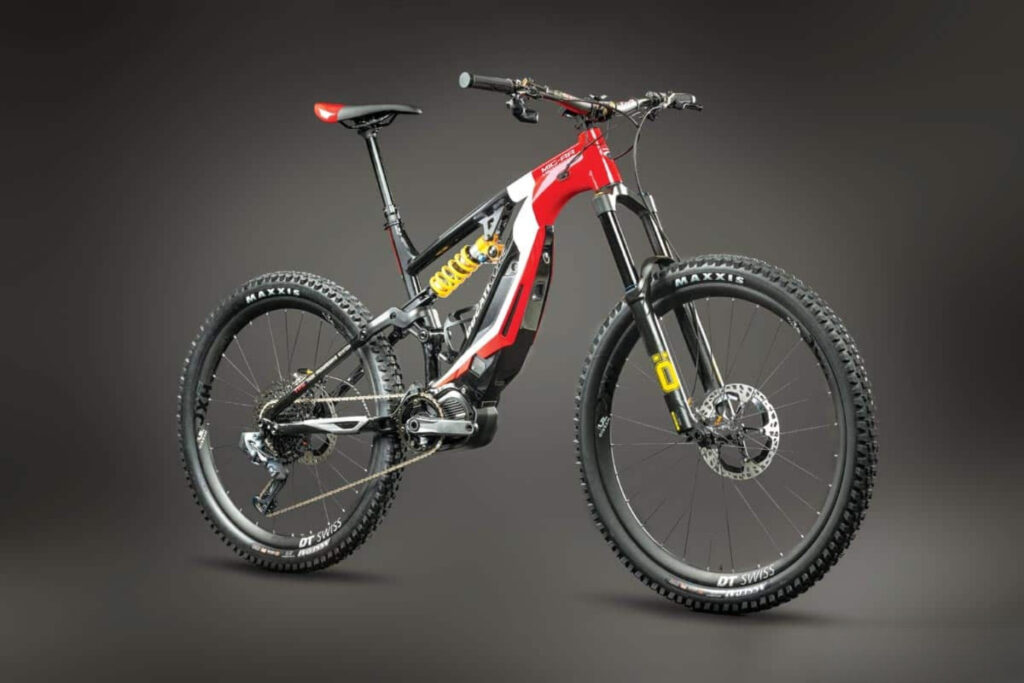
Harley-Davidson
Harley-Davidson has the philosophy “all roads lead to Harley.” That motto has pushed it into developing a range of untraditional types of Harleys, from the (non-electric) Pan America off-road adventure bike to the electric LiveWire and its electric bicycle line, Serial 1, which was named for the original motorcycle they produced back in 1903. Serial 1 carries the Harley-Davidson name but operates independently as LiveWire to be nimbler and innovative.
The Serial 1 bikes feature Brose motors, innovative frames thanks to the Harley engineers, unique lighting on the front of the head tube, and reasonable pricing.
Looking for more e-bike inspiration? Discover our top tips for buying an electric bike and the e-bikes that offer the longest range.
